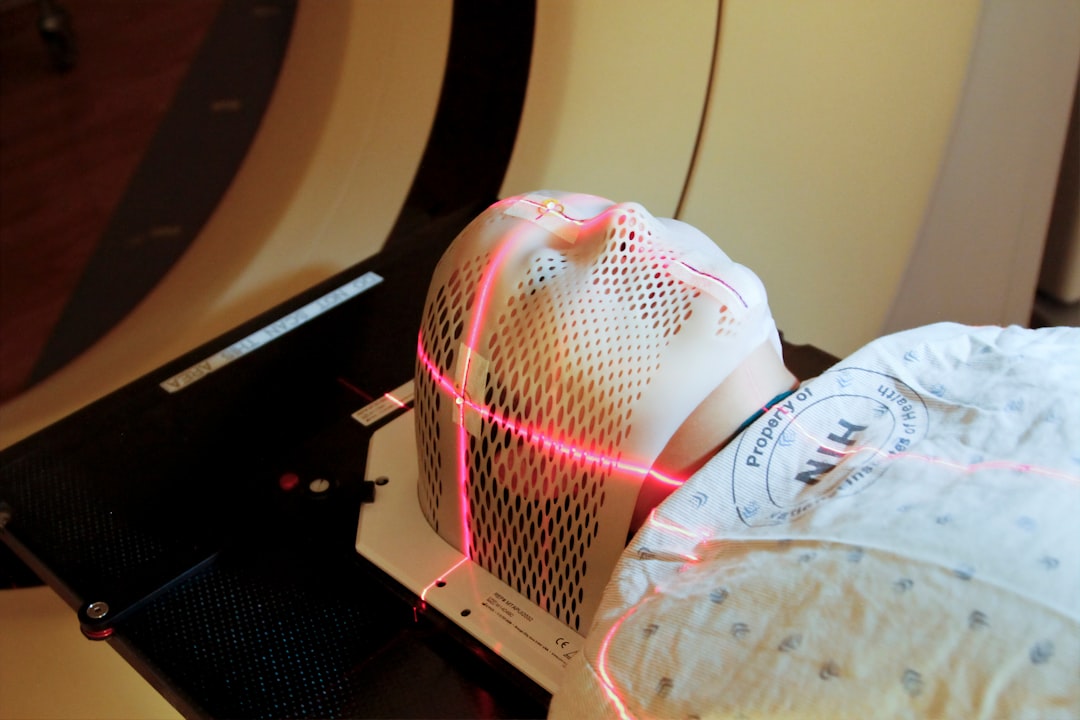At-home laser devices have revolutionized the way you approach skincare, offering a convenient and cost-effective alternative to professional treatments. These devices utilize various forms of laser technology, including diode, fractional, and LED lasers, to target specific skin concerns such as hair removal, acne scars, and signs of aging. By harnessing the power of light energy, these devices stimulate collagen production, promote skin rejuvenation, and can even help with pigmentation issues.
As you explore the world of at-home laser treatments, it’s essential to understand how these devices work and what they can do for your skin. The appeal of at-home laser devices lies in their accessibility. You can use them in the comfort of your own home, fitting treatments into your schedule without the need for appointments or travel.
However, it’s crucial to recognize that while these devices can be effective, they may not deliver results as dramatic as those achieved in a professional setting. Understanding the technology behind these devices will empower you to make informed decisions about your skincare routine and set realistic expectations for your results.
Key Takeaways
- At-home laser devices use targeted light energy to reduce hair growth and improve skin texture and tone.
- When choosing the right at-home laser device, consider your skin tone, hair color, and the area you want to treat.
- Before using an at-home laser device, prepare your skin by shaving and cleansing the treatment area.
- To use at-home laser devices safely, always follow the instructions, wear protective eyewear, and test a small area first.
- Consistency is key for maximizing results with at-home laser treatment, so stick to a regular treatment schedule.
Choosing the Right At-Home Laser Device for You
When it comes to selecting the right at-home laser device, you must consider your specific skin concerns and goals. Different devices are designed to address various issues, so it’s essential to identify what you want to achieve. For instance, if you’re looking to remove unwanted hair, a diode laser device may be your best option.
On the other hand, if you’re aiming to reduce fine lines and improve skin texture, a fractional laser might be more suitable. Researching the features and benefits of each type will help you make an informed choice. Additionally, you should take into account your skin type and sensitivity.
Some devices may be more effective on certain skin tones or types than others. For example, individuals with darker skin tones may need to choose devices specifically designed to minimize the risk of hyperpigmentation. Reading reviews and seeking recommendations from others who have similar skin concerns can provide valuable insights into which device may work best for you.
Ultimately, choosing the right at-home laser device is about aligning your needs with the technology available.
Preparing Your Skin for At-Home Laser Treatment

Preparation is key when it comes to achieving optimal results from your at-home laser treatments. Before you begin, ensure that your skin is clean and free from any makeup or skincare products. This step is crucial because any residue on your skin can interfere with the effectiveness of the laser treatment.
A gentle cleanser will help remove impurities without stripping your skin of its natural oils. After cleansing, pat your skin dry with a clean towel to avoid irritation. In addition to cleansing, consider exfoliating your skin a day or two before your treatment.
Exfoliation helps remove dead skin cells, allowing the laser to penetrate more effectively. However, be cautious not to over-exfoliate, as this can lead to sensitivity and irritation during the treatment process. If you have sensitive skin or are prone to reactions, it may be wise to perform a patch test with the device on a small area of your skin before proceeding with a full treatment.
This will help you gauge how your skin reacts and ensure that you’re ready for the full experience.
Tips for Using At-Home Laser Devices Safely
| Tip | Description |
|---|---|
| Read the Instructions | Always read and follow the instructions provided with the at-home laser device carefully before using it. |
| Test Patch | Perform a test patch on a small area of skin to check for any adverse reactions before using the device on a larger area. |
| Avoid Sun Exposure | Avoid using the laser device on sunburned or tanned skin to prevent skin damage. |
| Eye Protection | Use the provided eye protection or goggles to shield your eyes from the laser light during treatment. |
| Keep it Clean | Keep the device and its accessories clean and sanitized to prevent the risk of infection. |
Safety should always be your top priority when using at-home laser devices. To minimize the risk of adverse effects, it’s essential to follow the manufacturer’s instructions carefully. Each device comes with specific guidelines regarding usage frequency, duration, and settings tailored to different skin types.
Adhering to these recommendations will not only enhance your safety but also optimize your results. Another important safety tip is to wear protective eyewear if recommended by the device manufacturer. Lasers emit bright light that can be harmful to your eyes, so shielding them during treatment is crucial.
Additionally, avoid using the device on areas of your skin that are irritated or have open wounds. If you experience any discomfort or unusual reactions during or after treatment, discontinue use immediately and consult a healthcare professional if necessary.
Maximizing Results with At-Home Laser: Consistency is Key
To achieve the best results from your at-home laser treatments, consistency is essential. Just like any skincare regimen, regular use of your device will yield more noticeable improvements over time. Most at-home laser devices recommend a specific treatment schedule—whether it’s once a week or every few weeks—so it’s important to stick to this routine for optimal outcomes.
Skipping sessions can hinder progress and delay visible results. In addition to maintaining a consistent schedule, consider incorporating complementary skincare products into your routine. Using serums or moisturizers that support skin health can enhance the effects of your laser treatments.
Look for products containing ingredients like hyaluronic acid for hydration or peptides for collagen support. By combining consistent laser use with a well-rounded skincare regimen, you’ll be setting yourself up for success in achieving your desired results.
Managing Expectations: What At-Home Laser Can and Cannot Do
Understanding the Limitations
These devices are designed to address mild to moderate skin concerns, and their results may not be comparable to professional treatments performed by licensed practitioners. For example, you may see improvements in hair reduction or skin texture over time, but complete hair removal or dramatic changes in deep wrinkles may not be realistic goals.
Individual Results May Vary
It’s crucial to remember that individual results can vary based on factors such as skin type, age, and adherence to treatment protocols. This means that what works for someone else may not work for you, and vice versa.
Setting Realistic Expectations
By setting realistic expectations and being patient with the process, you’ll be more likely to appreciate the gradual improvements that come with consistent use. This balanced perspective will help you approach your skincare journey with a clear understanding of what to expect from at-home laser devices.
Combining At-Home Laser with Other Skincare Treatments
To enhance the effectiveness of your at-home laser treatments, consider combining them with other skincare treatments that complement their benefits. For example, incorporating chemical exfoliants or retinoids into your routine can help improve skin texture and promote cell turnover, making your skin more receptive to laser treatments. However, it’s essential to introduce new products gradually and monitor how your skin reacts to avoid irritation.
Additionally, you might explore combining at-home laser treatments with professional services for even better results.
Just be sure to space out these treatments appropriately and consult with a professional about how best to integrate them with your at-home routine.
Aftercare: Maintaining Results from At-Home Laser Treatment
Aftercare is a critical component of any skincare treatment plan, especially following at-home laser sessions. To maintain the results you’ve achieved, it’s essential to follow a proper aftercare routine. Start by keeping your skin hydrated; using a gentle moisturizer can help soothe any potential irritation caused by the laser treatment.
Look for products that contain calming ingredients like aloe vera or chamomile to promote healing. Moreover, protecting your skin from sun exposure is paramount after using an at-home laser device. Your skin may be more sensitive following treatment, making it susceptible to sunburn and pigmentation changes.
Applying a broad-spectrum sunscreen with an SPF of 30 or higher daily is crucial in safeguarding your skin and prolonging the benefits of your treatments. By prioritizing aftercare and sun protection, you’ll be well on your way to enjoying long-lasting results from your at-home laser experience. In conclusion, at-home laser devices offer an exciting opportunity for individuals seeking effective skincare solutions in a convenient format.
By understanding how these devices work and taking the time to choose the right one for your needs, you can embark on a successful journey toward healthier skin. Remember that preparation, safety precautions, consistency in usage, realistic expectations, and proper aftercare are all vital components in maximizing the benefits of at-home laser treatments. With dedication and care, you can achieve remarkable improvements in your skin’s appearance and texture right from the comfort of home.
If you are looking to get the best results from an at-home laser hair removal device, it is important to follow the proper techniques and guidelines. One helpful resource for tips and advice on at-home laser hair removal can be found on the In Laser Hair Removal blog. This blog offers valuable information on how to effectively use at-home laser devices to achieve smooth and hair-free skin. By following the tips and recommendations provided in this blog, you can ensure that you are getting the most out of your at-home laser hair removal treatments.
FAQs
What is an at-home laser?
An at-home laser is a handheld device that uses laser technology to target and treat various skin concerns, such as hair removal, acne, and anti-aging.
How can I get the best results from an at-home laser?
To get the best results from an at-home laser, it’s important to carefully follow the manufacturer’s instructions for use, including proper skin preparation, treatment duration, and frequency. Consistency and patience are key to achieving optimal results.
What are the common skin concerns that can be treated with an at-home laser?
At-home lasers can be used to treat a variety of skin concerns, including hair removal, acne, pigmentation, fine lines, and wrinkles. However, it’s important to choose the right device for the specific concern and to use it as directed for best results.
Are there any risks or side effects associated with using an at-home laser?
While at-home lasers are generally safe when used as directed, there are potential risks and side effects, such as skin irritation, burns, and changes in pigmentation. It’s important to carefully read and follow the device’s instructions and to perform a patch test before using it on a larger area of skin.
Can at-home lasers be used on all skin types and tones?
Not all at-home lasers are suitable for all skin types and tones. Some devices may be more effective and safer for certain skin types and tones, so it’s important to choose a device that is specifically designed for your skin type and to follow the manufacturer’s recommendations.





